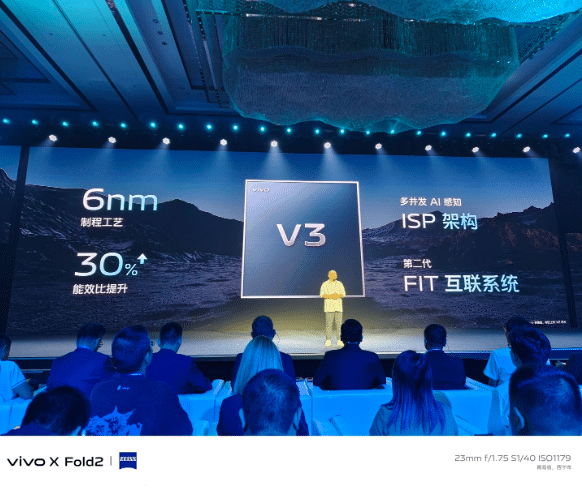In a special event held by vivo for the vivo Imaging Festival, they officially introduced their latest self-developed imaging chip, the V3. This new chip utilizes advanced 6nm process technology, resulting in a remarkable 30% increase in energy efficiency compared to its predecessor. The V3 incorporates a newly designed multi-concurrent AI perception-ISP architecture and second-generation FIT interconnection system, significantly reducing power consumption while enhancing the effectiveness of algorithms. This enables seamless integration between the V-chip and the SoC.

Leveraging the capabilities of the V3 chip, vivo proudly launched the first-ever 4K movie portrait video feature for Android devices. This groundbreaking technology promises movie-level bokeh blur, skin quality optimization, and superior color processing. Additionally, vivo introduced the Android platform’s innovative 4K post-shooting editing function, allowing users to adjust blurring and focus positions in their photo albums without losing quality. This editing experience rivals that of a professional movie master.
Vivo V3 Chip: a New Self-Developed Imaging Chip
As a result of their collaboration with Zeiss, vivo integrated the new Zeiss T* coating with Multi-ALD technology on the primary camera of their upcoming X-series flagship model. This coating effectively reduces reflectivity between lenses, leading to more transparent and picture performance. The company’s plans include launching a telephoto lens featuring the “Vario-Apo-Sonnar” standard, a first for mobile imaging systems. This innovative APO design significantly enhances zoom capabilities and overall image quality. The telephoto lens will also employ floating lens group technology, offering users exceptional resolution, focusing abilities, and remarkable macro shooting and creamy blur effects.
To further elevate image quality and innovation, vivo established a film and television-level light field system in Chongqing. This advanced system allows for reconstructing highly realistic, high-fidelity rendering visual effects, even achieving “pore-level” human 3D models. The company boasts three central portrait 3D perception algorithms, which precisely capture and interpret facial expressions, human body gestures, and gesture interactions.
Vivo actively embraces the AIGC algorithm and explores its application in high-quality virtual content creation for portrait shooting scenarios. Through this algorithm, users can capture more natural and harmonious photos, combine virtual elements with actual scenes, and even experience the beauty of all four seasons through pictures during their travels. Moreover, the AIGC algorithm empowers various portrait attribute editing functions, allowing users to adjust lighting, age, hairstyle, expression, and more flexibly.
Read Also: ASUS Vivobook 14X/16X Launched in Europe: Starting at €1099
Lastly, vivo introduces the vivo Texture Color feature, with independent adjustment of specific colors, rich color palettes, and seamless color transitions. The X90 series has already embraced this upgraded vivo Texture Color system, and the X80 series, vivo X Fold2, and X Flip, two flagship folding phones, are set to receive this enhancement in September.